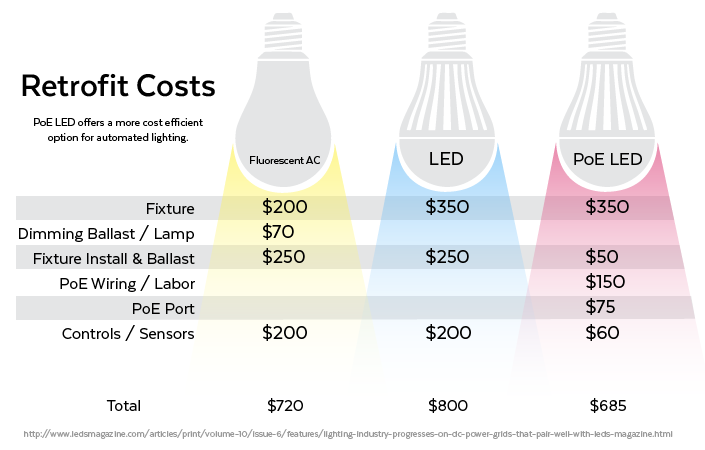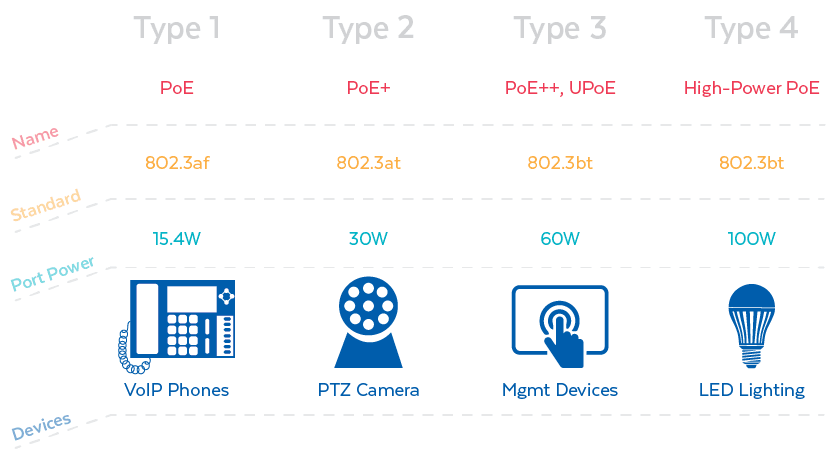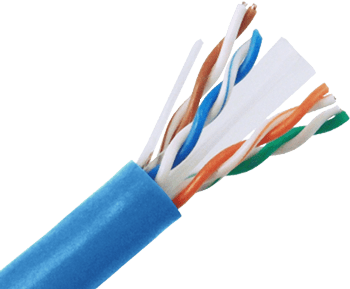XS Applied Technologies installs Luminetworx POE LED Lighting from LV Energy Systems .With traditional light sources that rely on the power grid of a building, users need to contract a professional electrician and follow extensive conduit rules and regulations. Luminetworx PoE lighting eliminates the need for a costly electrical contractor. POE LED light can reduce your electrical consumption for lighting by up to 80%. When you calculate the state and federal rebates and elimination of yearly bulb replacement your ROI (return on investment) is usually under 2 years.

Intelligent Lighting
But Luminteworx PoE Lighting accomplishes more than simplifying deployment. PoE connects LED light sources to the internet and gives users access to “Intelligent Lighting”. Intelligent Lighting enables users to remotely control their lighting systems via a mobile client device using the internet.
And unlike regular IoT devices that operate with the Z-Wave and Zigbee home automation standard, PoE LED lighting does not require a home gateway to operate. PoE LED lights receive their own IP address once connected to a LAN network via an Ethernet cable. This makes PoE LED lights ideal for home automation and enterprise usage.
Smart Offices
PoE LED lights can also be paired with other smart office accessories. LEDs can be readily paired with sensors, wireless communication modules, and embedded processors…The collected information could include ambient lighting, temperature, humidity, and anonymous room-occupancy data.” PoE-powered LED lighting networks truly give users the ability to “dynamically monitor and control” their LED lighting system.
Co-Working Spaces
Because PoE gives users a “mobile power source”, office workers can freely modify the lighting of their office spaces. This feature is especially convenient in co-working spaces that are popular in the startup scene where office users may need temporary and custom lighting arrangements. PoE LED lighting allows offices to offer flexible and almost modular-like lighting.
Ambiance
In addition, RGB LED lights allow users to easily choose the color of their lighting.
No Interference
Because PoE LED lights are directly connected to the internet via a network cable, users can expect consistent reliable performance without Wi-Fi interference.
The Future of PoE Lighting
There are several advantages to PoE lighting, including automation, remote control, and the cost-efficiency of Cat6 Cable. Cost, mobility, and ease of installation are some of the factors that will attract users to invest in these next generation lighting options.

Type 1
The first PoE type is normally referred to as – yep, you guessed it – PoE. It conforms to the IEEE 802.3af standard and it can supply maximum power to port of 15.4 Watts. It was an early PoE standard created back in 2003, meant to supply electricity to low-powered devices on a network, including VoIP phones, sensors, wireless access points, and simple static surveillance cameras that can’t move from side to side or up and down.
Type 2
The second PoE type is commonly referred to as PoE+ and PoE Plus. Type 2 PoE conforms to the IEEE 802.3at standard, and it can supply maximum power to port of 30 Watts. This newer standard is backward compatible, meaning it also supports Type 1 PoE devices. Type 2 PoE can power PDs such as wireless access points with six antennas, biometric sensors, LCD displays, and more advanced cameras that have pan, tilt, and zoom functionalities.
Type 3
Type 3 is the third PoE type, and it is also known as 4-pair PoE, RP PoE, PoE++, and UPOE because it uses all four pairs in a copper cable. It conforms to the IEEE 802.3bt PoE standard, and it can supply maximum power to port of 60 Watts. PoE++ has enough power per port to operate management devices and video conferencing systems.
Type 4
Commonly referred to as higher-power PoE, Type 4 also conforms to the newest IEEE 802.3bt standard, but it can supply maximum power to port of 100 Watts in order to accommodate the growing power requirements of network devices and IoT. It can even support power hungry laptops and TVs.
The 100 Watt PoE Standard (IEEE 802.3bt)
As mentioned above, the newest 802.3bt standard calls for both Type 3 (60W) and Type 4 (100W) power variants. Now, you can carry nearly 100 Watts of electricity over a single PoE cable.
If your network uses PSE compliant to the new 100W PoE standard, you’ll be able to power devices like thermal cameras with PTZ features, large display screens, and large LED lighting fixtures, just to name a few.
Although 100W of PoE power may seem excessive, it’s actually quite the contrary – with the growing IoT market and the emergence of smart homes and buildings in addition to rising power demands, 802.3bt has arrived in the nick of time.
100W PoE is a stepping stone along the path towards making complex networks in smart homes and buildings a reality. Smart buildings would be far more expensive to design – let alone build – without high power PoE capabilities.
IEEE 802.at and 802.3af standards used a four-pair cable, but the old standards only called for power delivery from two of the pairs. It used either pairs 2 and 3 or 1 and 4, but not both pairs at the same time.
Conversely, IEEE 802.3bt uses all of the pairs in a four-pair cable, which allows current to flow evenly among them. This innovation drastically improves the amount of power that can be transmitted over a single PoE cable, in addition to the higher data rate of up to 10GBASE-T.
If you’re using the new standard, you won’t be able to use CAT 5e cabling anymore. Instead, you’ll have to upgrade to category 6A 4-pair balanced twisted-pair cabling in order to achieve the best possible thermal and power efficiency. This upgrade is necessary because less power is dissipated in a CAT 6A cable, meaning your PDs (Powered Devices) will receive more power as opposed to it being wasted due to the inefficiency of an old CAT 5e cable.
If you’re using power hungry devices, you may even want to consider a special CAT 6a cable designed to withstand the extra heat generated when cables are bundled together.
Upgrading your network to 100W PoE Power Sourcing Equipment, devices, and CAT 6a cable is the only surefire way to future proof your network for the growing power demands that are already at your doorstep.
Contact us today to see how the experts at XS can help you save money by switch to POE LED lighting.

